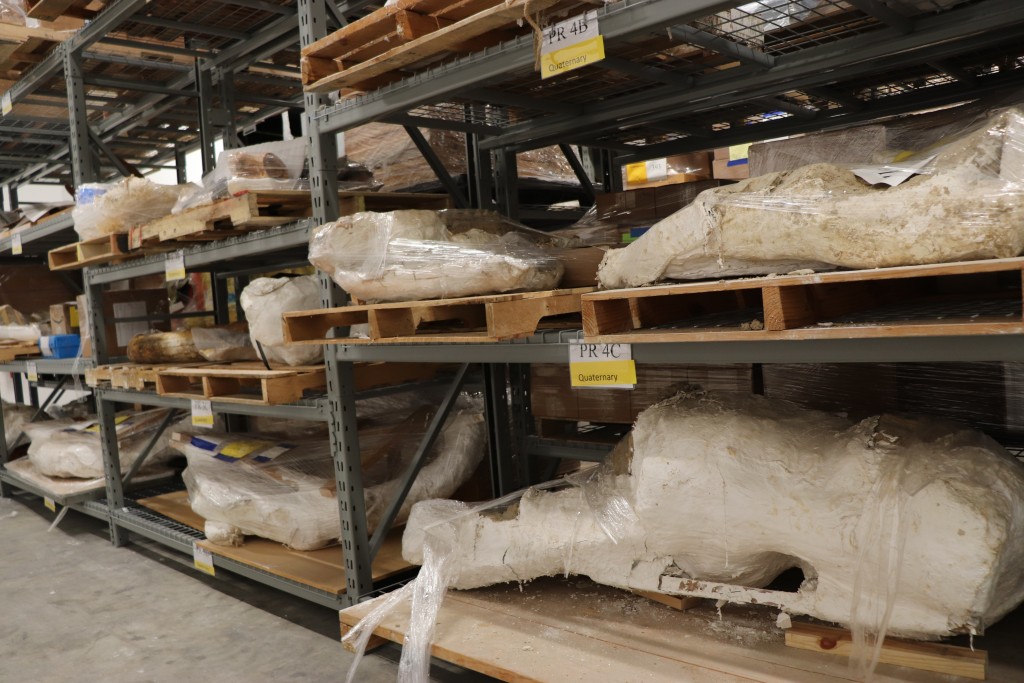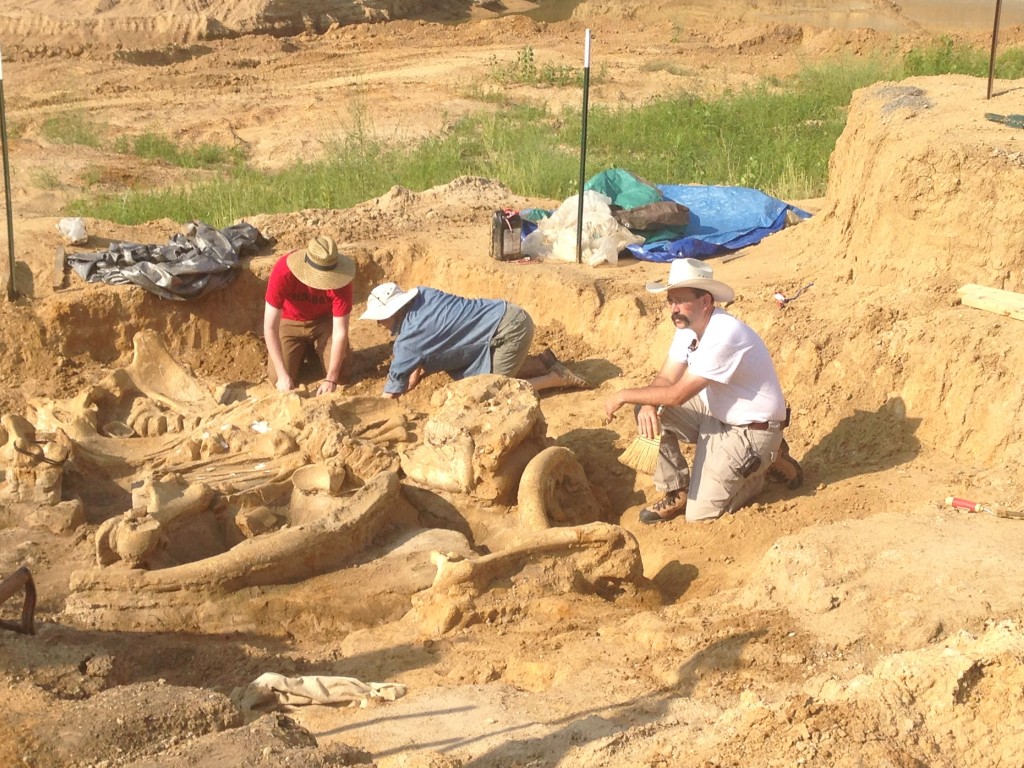Spring Cleaning? See What’s Inside The Perot Museum’s Giant Closet
ArtandSeek.net March 30, 2020 28Every day on Art&Seek, we’re talking to people who have tips for staying creative and calm. Share yours with us on Facebook, Instagram or @artandseek on Twitter. You can click above to listen to today’s tip from KERA’s Nilufer Arsala.
Some of you might be using your downtime to clean a closet or two. The team from the Perot Museum of Nature and Science has been tackling one of the biggest and most unique closets in town!
The Perot has more than 100,000 specimens in their gymnasium-sized closet. The specimens run from taxidermied polar bears to snakes in jars, fossils from across the world, and even modern things you can find in your own backyard. Right now, they’re using this downtime to organize, clean, catalog, and do repairs. They’re also giving a lot of attention to their arctic Alaskan dinosaur and plant fossils. They want to make sure that these specimens are here for generations to come.

Dr. Ron Tykoski, photo by Kaitlyn Kilpatrick, Perot Museum of Nature and Science)
Leading the effort in the organizing is Dr. Ronald Tykoski, Director of the Arctic Paleontology Center and Curator of Vertebrate Paleontology at the Perot
Here are Dr. Ron’s thoughts on organizing the Perot’s “giant closet.”
“Museum collections, like the Perot Museum’s “closet,” are special places.
“They’re much like a library, but instead of books or articles, they preserve scientific information in the form of real specimens. I’m a paleontologist, but without the fossils being accessible and available for me to hold, stare at and compare to other fossils, there’s very little I can do. Museums and their collections are critical storehouses of knowledge, and with the rise of new technologies such as genetic analysis, museum collections of all kinds are experiencing a resurgence in appreciation and use in scientific studies across many fields.

FROM THE WAREHOUSE: Perot Museum specimens range in size from teeth and jaws of bats and rodents to giant plaster-wrapped blocks like these that containing the skull, tusks, and other bones of a huge, Ice-Aged Columbian mammoth collected near Corsicana, TX. Photo: Perot Museum of Nature and Science)
“Nilufer asked what my favorite unexpected thing was that we found in the collections. I hadn’t really
thought about it, but it’s always really neat to go rummaging around the collections, peeking into nooks and crannies that are often overlooked.
“It’s almost always surprising to discover something that you didn’t reaShortcodelize the Museum had in its collection – like Narwhal tusks, or a rare bird specimen collected decades ago by museum naturalists, or letters sent to the Museum 80 years ago by a famous paleontologist. Those are great moments that connect us to past generations of naturalists, exhibit designers and artists, and scientists who built the body of knowledge that we have to work with today.

Dr. Tykoski at the mammoth dig site with where a nearly intact and pristine Columbian mammoth (Mammuthus columbi) was discovered in an Ellis County sandpit in 2015. Photo: Perot Museum of Nature and Science)
“As museum collections specialists and researchers who use collections to make scientific discoveries today, we are obliged to make sure these scientific treasures are preserved and survive for generations of scientists to come.
“Part of our mission is to maintain the records associated with each specimen because without that information a specimen’s scientific value plummets. Time also takes a toll on the specimens themselves, by decay and degradation of biological and fossil specimens, as well as aging of the glues and other adhesives used to hold broken specimens together.
“Collections managers and staff are always on the lookout for specimens in need of attention, which are then pulled out and handed over to preparators to repair and build better storage systems out of modern, archival materials. It’s a never-ending job!”
Stay on top of North Texas COVID-19 updates with KERA News









